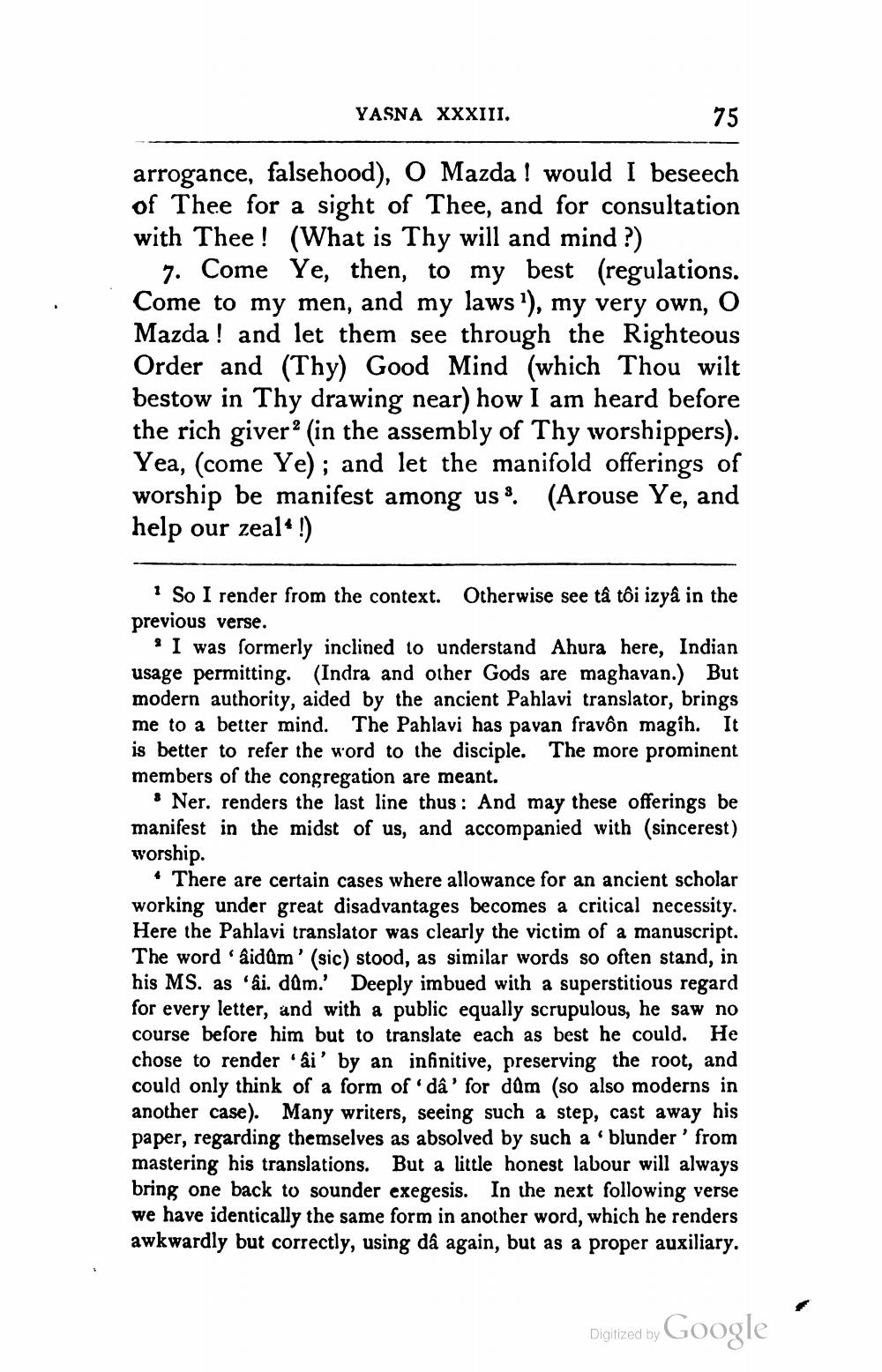________________
YASNA XXXIII.
75
arrogance, falsehood), O Mazda ! would I beseech of Thee for a sight of Thee, and for consultation with Thee! (What is Thy will and mind ?)
7. Come Ye, then, to my best (regulations. Come to my men, and my laws '), my very own, O Mazda! and let them see through the Righteous Order and (Thy) Good Mind (which Thou wilt bestow in Thy drawing near) how I am heard before the rich giver? (in the assembly of Thy worshippers). Yea, (come Ye); and let the manifold offerings of worship be manifest among us S. (Arouse Ye, and help our zeal* !)
? So I render from the context. Otherwise see tâ tôi izyâ in the previous verse.
'I was formerly inclined to understand Ahura here, Indian usage permitting. (Indra and other Gods are maghavan.) But modern authority, aided by the ancient Pahlavi translator, brings me to a better mind. The Pahlavi has pavan fravôn magih. It is better to refer the word to the disciple. The more prominent members of the congregation are meant.
* Ner. renders the last line thus : And may these offerings be manifest in the midst of us, and accompanied with (sincerest) worship.
• There are certain cases where allowance for an ancient scholar working under great disadvantages becomes a critical necessity. Here the Pahlavi translator was clearly the victim of a manuscript. The word 'aidum' (sic) stood, as similar words so often stand, in his MS. as "ai. dum.' Deeply imbued with a superstitious regard for every letter, and with a public equally scrupulous, he saw no course before him but to translate each as best he could. He chose to render 'ai' by an infinitive, preserving the root, and could only think of a form of dâ' for dum (so also moderns in another case). Many writers, seeing such a step, cast away his paper, regarding themselves as absolved by such a blunder' from mastering his translations. But a little honest labour will always bring one back to sounder exegesis. In the next following verse we have identically the same form in another word, which he renders awkwardly but correctly, using dâ again, but as a proper auxiliary.
Digitized by
Digitized by Google




